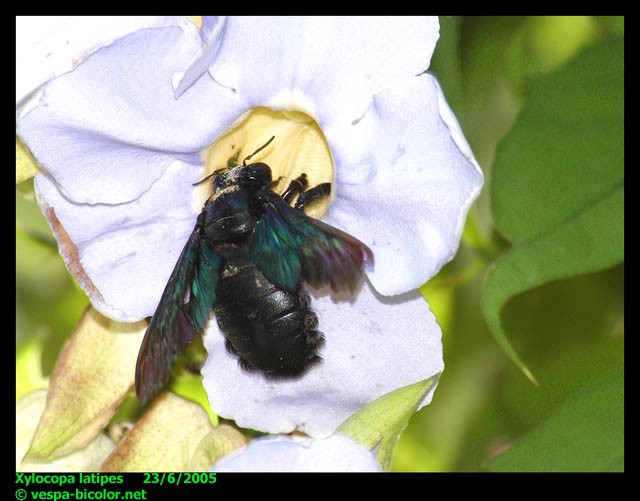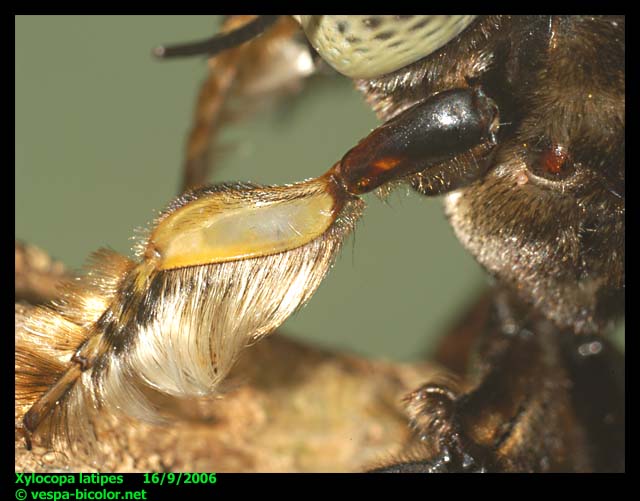
Common name(s): Carpenter bee
A very large bee, reaching 35mm. Fully black. Wings with metallic blue, green and purple colours under sunlight. This species is not as sexually dimorphic (distinguishable) as many other species are at first glance, as the male neither differs in colour nor has the front of his head lighter in colour. However, he has unusual legs; they are unusually hairy, and the front legs are lighter in colour, with long, smooth hairs arranged in a strange "brush-like" way.
This species is quite widely distributed across Southeast Asia, and is also one of the commonly seen species in Singapore.
As mentioned earlier, this species is probably the largest Xylocopa, and in fact, the largest overall bee! (See comparison on the main solitary bee section).
This giant bee is commonly seen feeding from flowers. For some reason, this species seems to feed on flowers much higher up than the other common species, Xylocopa confusa. It also appears to prefer purple flowers, as opposed to Xylocopa confusa, which prefers yellow ones, although both these notes are not absolute rules but just general observations.
This species is said to be quite versatile in choice of nesting sites. However, 70% of the nests I found were in tree branches. Although this bee is far wider in proportion than many of its kin, the entrance hole is not always significantly larger than that of other carpenter bees; in fact, the size of the entrance hole seems linked to the area and structure the nest is built in. For instance, in open locations such as wooden poles used to support small trees or basketball posts, the hole usually leads straight into the nest, and the diameter is quite small for such a large bee (1 cm). However, in shady, wooded areas, these bees make far larger entrance holes which lead into the tree branch at an angle; these holes may be 2 cm in diameter! Furthermore, a nest on such a tree trunk may have 2 or 3 entrances, instead of just one! On my visit to Singapore in September 2006, I found a branch with 3 separate nests; there were 9 entrance holes, 3 to each!
This bee frequently evokes both fear and fascination in those who see one. It is assuredly safe to watch this gentle giant going about its work, collecting nectar and pollen or biting a nest entrance in a branch.

Above: Female feeding from flower.
Below: Male. The last photo shows his unusual front legs.

